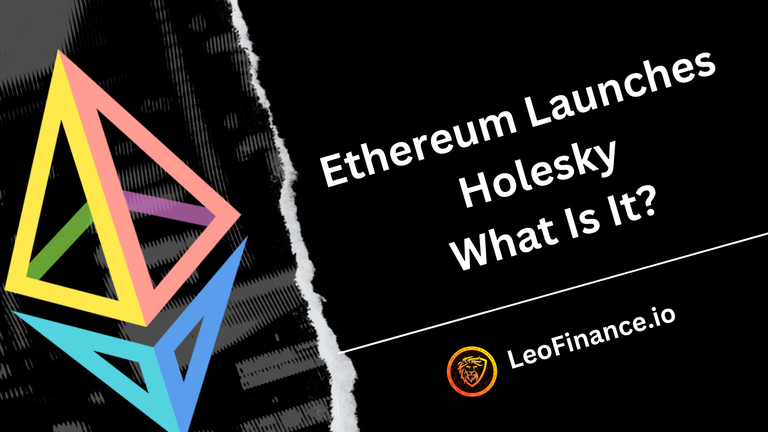Ethereum Launches Holesky What Is It?

Ethereum has just released a new testnet called Holesky or if you want the right format Holešky. It currently has 1.6B ETH for devs to use which should make the testnet more accessible compared to the older Goerli network.
The network is designed to be a staking, infrastructure protocol for development and developer documents while Sepolia will still remain to be the dominant network that's used for application development. However Holesky will have enhanced testing capabilities which will replace some of the normal functionality of the older Goerli network.
What this is showing us is a great need for a newer testnet that is able to handle a lot more in terms of development and the complexity of it all. Meaning we could just now be starting to usher in a new development milestone or era that Ethereum will break out with much like we had the invention of the NFT and DeFi marketplaces.
Ethereum Revamp
This entire change is through a massive revamp of the Ethereum's testing environment. It's to be supported until 2028 or a five year road map that will be spotted with continued improvements and innovation.
Currently other validator test nodes such as Goerli and Sepolia are smaller end and end up not giving the grand vision of what launching your application on the mainnet might look like and act. However with Holesky that should all change. Developers can rest assure with the large amount of infrastructure and upgrades under rigorous conditions. This means if your application is running smoothly on the Holesky testnet then you're most likely a lot more confident when you launch on the mainnet.
A Year Of Staking
After a full year of staking with Ethereum 2.0 moving to Proof of Stake it's clear that Ethereum is still thriving even during these bear market. It's continued to hold a dominating factor on the crypto stage but it's been also meet with some headwinds.
As of today only about 20% of all Ethere in circulation has been locked up into the proof of stake system. But is starting to greatly speed up now that the locking period was removed from Ethereum. Before this happened node operators had to lock up their Ethereum with no set date yet as to when that Ethereum could be unstaked. At current rates we should see north of 50% staked by the end of 2024.
At the moment Ethereum staking currently pays out roughly a 4% APY. Meaning if you had 100,000 Ethereum staked you'd be issuing out roughly 4,000 ETH per year.
However in a recent move that has been approved developers agreed to cap the number of new validators that operate staking wallets. One of the recent pit falls of Staking tokens in general is far too few people stake their own crypto and act as a validator. Instead they send their tokens off to places like coinbase which take a fee to run and operate the node of which they get a decent amount of return back.
Right now Coinbase pays a 3.3% APY on staked Ethereum which is pretty high. Meaning the company at most holds 0.7% ETH as a profit for running the node or nodes. This however issues in a major security flaw in that only a select few node operators now control the entire network creating an even more centralized system. It seems like the dev team is working on how to build solutions for this and perhaps dawn in a new update that would be like POS but make everything more dectralized.
Posted Using LeoFinance Alpha
https://leofinance.io/threads/bitcoinflood/re-bitcoinflood-2gn9zeweb
The rewards earned on this comment will go directly to the people ( bitcoinflood ) sharing the post on LeoThreads,LikeTu,dBuzz.
@tipu curate
Upvoted 👌 (Mana: 33/53) Liquid rewards.
!DHEDGE
!HIVEBITS
you have 0.0 vote calls available today, your vote calls will reset at next snapshot. You can buy DHEDGE on Tribaldex or earn some daily by joining one of our many delegation pools at app.dhedge.cc to increase your daily amount.